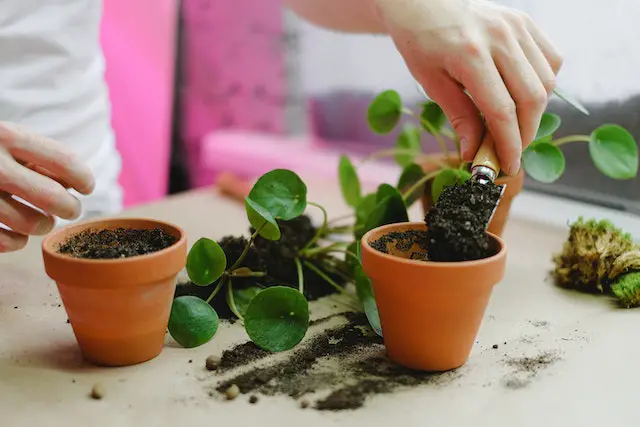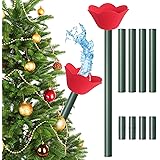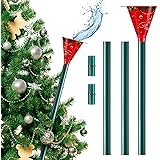When to fertilize after repotting is an important question that many gardeners ask. Repotting is a necessary step in keeping your plants healthy and thriving, but it can also be stressful for the plant. Fertilizing your plants at the right time after repotting is key in giving them the boost they need to grow and flourish.
In this blog post, we’ll take a look at the best time to fertilize after repotting, so that you can give your plants the best care possible.
Fertilizing after repotting is important for plant growth
When you repot a plant, you are placing it in a new environment with new soil, and it may need additional nutrients to help it thrive.
Fertilizing your plant after repotting helps give it the boost it needs to continue growing.
Fertilizer provides essential nutrients such as nitrogen, phosphorous, and potassium, which are essential for plants to grow healthy leaves, stems, and roots. The fertilizer also helps promote strong root growth and blooming.
It is important to make sure you are using the correct type of fertilizer for your plant.
Different types of plants require different types of fertilizer, so make sure you check the label to ensure you are giving your plant the right type of fertilizer.
Fertilizing your plants regularly after repotting will help ensure they get the nutrients they need to thrive and grow in their new environment.
The best time to fertilize is after the plant has had a chance to recover from the stress of being transplanted
Repotting can be stressful for a plant and can cause root damage.
Fertilizing too soon after repotting can further damage the roots, while fertilizing too late can result in the plant not getting the nutrients it needs.
To ensure that your plants get the most benefit from fertilizer, it’s best to wait a week or two after repotting before fertilizing.
You also want to make sure that the soil you use is well drained, as overly wet soil can cause the fertilizer to leach out quickly.
If the soil you’re using doesn’t drain well, consider mixing in some compost or adding some perlite to help improve drainage.
Once the soil has had a chance to settle and the roots have had a chance to recover, then it’s safe to begin fertilizing your newly transplanted plant.
Fertilizing too soon after repotting can damage the roots of the plant
Plants are vulnerable after they’ve been transplanted, so it’s important to be careful when you’re fertilizing.
Fertilizing too soon can put too much stress on the roots, resulting in damage.
The roots have already been disturbed during the transplanting process and need time to recover before they can take up nutrients from the soil.
Applying fertilizer right away will not give the roots the chance to develop and can lead to stunted growth, yellowing leaves, and other signs of plant distress.
It’s best to wait until the plant has had some time to settle in before fertilizing.
This way, the roots can establish themselves and the plant can start to thrive.
Make sure to follow the instructions on the label for how often to fertilize and how much to apply.
Fertilizing too late can result in the plant not getting the nutrients it needs
If you wait too long after repotting to fertilize, your plant won’t be able to absorb the nutrients it needs to grow.
The roots of the plant may already have started to deteriorate due to lack of nutrients. This can lead to stunted growth, yellowing of the leaves, and even death of the plant if the problem is not addressed in a timely manner.
To make sure your plant is getting all the nutrients it needs, fertilize it one or two weeks after repotting.
If you are using a slow-release fertilizer, wait a bit longer before applying it, as it takes time for the nutrients to be released into the soil.
Be sure not to over-fertilize, however, as this can also be detrimental to your plant’s health.
Too much fertilizer can result in an accumulation of nutrients in the soil, leading to the development of root rot and other fungal diseases.
So make sure you follow the directions on the packaging of your fertilizer and only apply as much as is recommended for your particular plant.
Fertilize a week or two after repotting
When it comes to fertilizing after repotting, timing is key.
To give your plants the best chance of thriving, fertilize them a week or two after repotting. This gives the plant enough time to recover from the stress of being transplanted and also gives its roots enough time to establish themselves in the new potting soil.
When fertilizing, be sure to use a fertilizer that is balanced for your particular plants. Depending on the type of plant you have, it may need different types of nutrients in its fertilizer.
Also, be careful not to over-fertilize, as this can cause the plant to become burned or damaged.
If you’re using a slow-release fertilizer, wait even longer than a week or two before applying it to the soil.
Slow-release fertilizers can last anywhere from several weeks to several months and will continue to provide your plants with the nutrients they require over an extended period of time.
By fertilizing a week or two after repotting, you can ensure that your plants get the nutrients they require in order to grow and thrive in their new environment.
You should also take into account when the growing season starts for each particular species of plant when determining when to fertilize.
For most species, late winter/early spring is usually the best time to start fertilizing. During the summer and fall months, most species don’t need to be fertilized as frequently, since they typically grow more slowly during these times of the year.
Additionally, if you are dealing with a particularly finicky species, you might want to consult with a local nursery or garden center to find out when the best time to fertilize would be.
Lastly, it’s important to monitor your plants and take note of any signs of nutrient deficiency such as yellowing leaves or stunted growth so that you can adjust your fertilizer accordingly.
If you’re using a slow-release fertilizer, wait even longer
Using a slow-release fertilizer can be beneficial for plants because it can provide nutrients over a longer period of time.
However, when it comes to fertilizing after repotting, it’s best to wait even longer than you would if you were using a traditional fertilizer.
When using a slow-release fertilizer, you should wait at least 2-3 weeks after repotting before applying the fertilizer.
This gives your plant enough time to recover from being transplanted and ensures that the nutrients are slowly released into the soil, allowing for better absorption.
By waiting longer to fertilize, you will help ensure that your plant gets the nutrients it needs without overwhelming its fragile root system.
Be sure to always follow the directions on the fertilizer package when applying and take care not to over-fertilize.
Frequently asked questions (FAQs)
How soon after repotting should I fertilize my plants?
If you’ve used new soil when repotting, wait a few weeks before fertilizing your plants. If you haven’t used new soil, wait at least one month before fertilizing.
What type of fertilizer should I use?
When it comes to fertilizing your plants, it’s important to choose the right fertilizer for the type of plant you have. Look for a fertilizer specifically formulated for houseplants or indoor plants, and follow the instructions on the package.
How often should I fertilize my plants?
Generally speaking, most houseplants will benefit from being fertilized once every two weeks during their active growth season (typically spring and summer). During the rest of the year, reduce the frequency to once a month.
Is there a risk of over-fertilizing?
Yes, there is a risk of over-fertilizing your plants, which can lead to an accumulation of salt in the soil and damage the roots of your plants. Always read and follow the instructions on the fertilizer package to avoid over-fertilizing.
Wrapping up
Repotting your plants can be a great way to give them a new lease of life and help them reach their full potential. However, knowing when to fertilize after repotting is an important part of the process. If you’ve used new soil, wait two weeks before fertilizing. If you haven’t used new soil, wait at least four weeks before fertilizing. Generally speaking, fertilizing your houseplants once every month or two is ideal. Be sure to use the right fertilizer for your plant, and always check the instructions on the package to make sure you’re using the correct amount. With proper care and attention, your houseplants will thrive for years to come!
Auto Amazon Links: No products found.
Perfect Plants Christmas Tree Saver 8oz. | Easy Use Xmas Tree Preserver Food | Have Healthy Green Christmas Trees All Holiday Season
$9.97 (as of December 16, 2025 05:22 GMT +00:00 - More info- Product prices and availability are accurate as of the date/time indicated and are subject to change. Any price and availability information displayed on [relevant Amazon Site(s), as applicable] at the time of purchase will apply to the purchase of this product.
FirEver Pure Christmas Tree Food | Preserver Additive & Season Extender for Live Xmas Trees | Keep It Green, Reduce Needle-Drop | Miracle Freshness (8 oz)
$14.99 (as of December 16, 2025 05:22 GMT +00:00 - More info- Product prices and availability are accurate as of the date/time indicated and are subject to change. Any price and availability information displayed on [relevant Amazon Site(s), as applicable] at the time of purchase will apply to the purchase of this product.
Rocky Mountain Goods Christmas Tree Food - 8 oz Tree Preservative - Reduce Needle Drop - Greener Scent - Fir, Pine, Spruce Trees - Extend Tree Life
$9.95 (as of December 16, 2025 05:22 GMT +00:00 - More info- Product prices and availability are accurate as of the date/time indicated and are subject to change. Any price and availability information displayed on [relevant Amazon Site(s), as applicable] at the time of purchase will apply to the purchase of this product.
EZMeetU Christmas Tree Watering Funnel, 47 Inch Flower Shape Adjustable 6 Section Design, Christmas Tree Watering System, Christmas Tree Waterer, Long Funnel Wide Opening Reusable, Plant Watering Tool
$16.99 (as of December 16, 2025 05:22 GMT +00:00 - More info- Product prices and availability are accurate as of the date/time indicated and are subject to change. Any price and availability information displayed on [relevant Amazon Site(s), as applicable] at the time of purchase will apply to the purchase of this product.
VICAMB 39.3 Inch Christmas Tree Watering Funnel,Christmas Tree Watering System Device,Long Tree Watering Funnel Spout for Indoor Outdoor Xmas Tree
$17.99 (as of December 16, 2025 05:22 GMT +00:00 - More info- Product prices and availability are accurate as of the date/time indicated and are subject to change. Any price and availability information displayed on [relevant Amazon Site(s), as applicable] at the time of purchase will apply to the purchase of this product.
Snow Joe Premium Enviro Blend Ice Melt, Green-Coated Deicer Crystals, 50 lb - Safer Melter for Vegetation, Concrete & Metals w/ Anti-Corrosion Calcium Magnesium Acetate
$32.97 (as of December 12, 2025 19:27 GMT +00:00 - More info- Product prices and availability are accurate as of the date/time indicated and are subject to change. Any price and availability information displayed on [relevant Amazon Site(s), as applicable] at the time of purchase will apply to the purchase of this product.
Muddy Mat® Shown on TV Super Absorbent Microfiber Dog Door Mat for Muddy Paws, Non-Slip Washable Pet Rug, Quick Dry Chenille Entryway Carpet, Machine Washable Indoor Outdoor mat, Grey 30"x19"
$24.95 (as of December 12, 2025 19:27 GMT +00:00 - More info- Product prices and availability are accurate as of the date/time indicated and are subject to change. Any price and availability information displayed on [relevant Amazon Site(s), as applicable] at the time of purchase will apply to the purchase of this product.
ivtivfu Rolling Grill Basket, Removable Wooden Handle, 304 Stainless Steel, Nesting BBQ Tools, Smoker Grilling Accessories for Vegetable, Outdoor Cooking Camping, Birthday Gifts for Men Dad Husband
$25.99 (as of December 12, 2025 19:27 GMT +00:00 - More info- Product prices and availability are accurate as of the date/time indicated and are subject to change. Any price and availability information displayed on [relevant Amazon Site(s), as applicable] at the time of purchase will apply to the purchase of this product.
XXXFLOWER Plant Terrarium with Wooden Stand, Air Planter Bulb Glass Vase Metal Swivel Holder Retro Tabletop for Hydroponics Home Garden Office Decoration - 3 Bulb Vase
$18.98 (as of December 12, 2025 19:27 GMT +00:00 - More info- Product prices and availability are accurate as of the date/time indicated and are subject to change. Any price and availability information displayed on [relevant Amazon Site(s), as applicable] at the time of purchase will apply to the purchase of this product.
Zevo Flying Insect Trap Official Refill Cartridges - Fits Both Zevo Trap & MAX Indoor Fly Trap - Authentic Trap+Lock Technology to Catch Gnats, House & Fruit Flys (4 Official Refill Cartridges)
$14.97 (as of December 12, 2025 19:27 GMT +00:00 - More info- Product prices and availability are accurate as of the date/time indicated and are subject to change. Any price and availability information displayed on [relevant Amazon Site(s), as applicable] at the time of purchase will apply to the purchase of this product.











